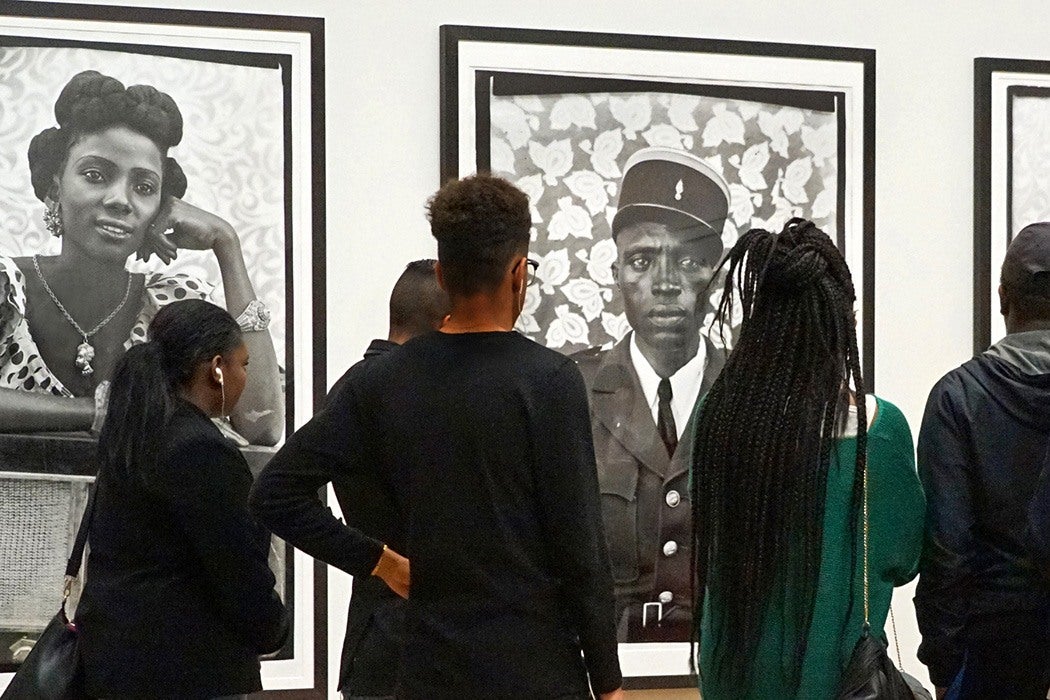Twenty-five years ago, Malian photographer Seydou Keïta’s work first showed in New York. It showed without any attribution, as an “unknown artist” included in the exhibition Africa Explores. Following his death in 2001, Keïta’s work has seen a surge of interest, appearing this past summer in exhibitions in Paris and Dubai. The late photographer would likely be pleased with, but not surprised by, his continued success and growing popularity. In his own words: “I know that there are many of my photos which are good, and that’s why you like my work.” Keïta’s story is mythic and rich, both in the ways it is told and in his rise to international fame.
In the Euro-American art world, Seydou Keïta’s story often begins in the middle. After Keïta’s work was shown in Africa Explores, curator André Magnin went to Bamako, Mali to seek out the then-unidentified artist. This is where some accounts find a mythic tin of negatives buried beneath the dirt near Keïta’s former photography studio, while others tell of an archived trunk of more than 10,000 negatives. Regardless of what odd container the negatives were really hiding in, Magnin found and identified Keïta and his work, eventually meeting the artist himself. Keïta loaned Magnin about 20 years worth of negatives of studio portraiture, ranging from 1962-1984. Keïta’s negatives later were reprinted in Europe and exhibited internationally.
In his native Bamako, Keïta was already famous for his signature styles, poses, and compositions, as well as his ability to capture the essence of the sitter in a single portrait. As the scholar Elizabeth Bigham notes: “His studio was born during the immense economic and demographic boom that swept Bamako in the years after World War II.” Keïta created his archive during a fascinating time, preserving distinct moments during and after French colonialism in west Africa.
Sitters for portraits would curate their images, present themselves as they wanted to be seen. Wearing a range of clothing, varying from traditional Malian dress to Western suits Keïta kept in his studio, sitters could also select their accessories, ranging from smaller items like a pen or radio to bigger items like mopeds and cars. Bigham explains the significance of these choices in terms of symbolism in a rapidly changing time: sitters “could select an entire ensemble or a single accessory capable of signifying their modernity, cosmopolitanism, and prosperous elegance.”
Bigham highlights the complexity of authorship in Keïta’s photographs, exploring the ways in which the sitter and photographer worked collaboratively to produce the final image. She writes that Keïta’s success is “entrenched in a specific framework and experience of authorship, which originally involved the conjunction of the portrait photograph’s intimate negotiations: of photographer and client, aesthetic practice and the marketplace, and of the genre’s conventions, Keïta’s own aesthetic strategies, and individual subjects’ desires.”







